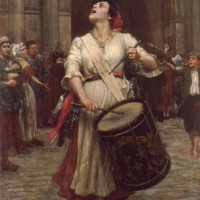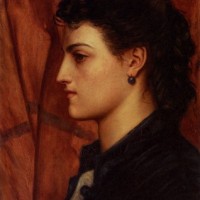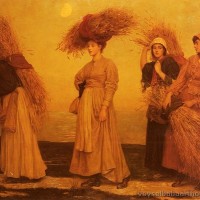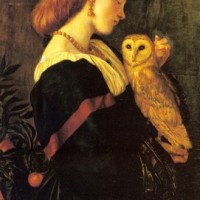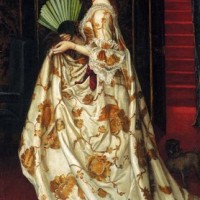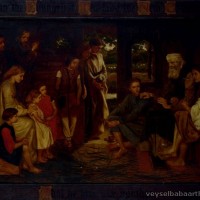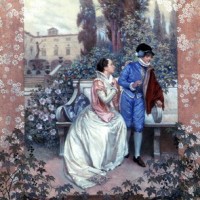- Home
- ABOUT US
- ABOUT VEYSEL BABA
- REDFOX ART HOUSE VIRTUAL TOUR
- MY LAST WILL TESTAMENT
- NOTES ON HUMANITY AND LIFE
- HUMAN BEING IS LIKE A PUZZLE WITH CONTRADICTIONS
- I HAVE A WISH ON BEHALF OF THE HUMANITY
- WE ARE VERY EXHAUSTED AS THE DOOMSDAY IS CLOSER
- NO ROAD IS LONG WITH GOOD COMPANY
- THE ROAD TO A FRIENDS HOUSE IS NEVER LONG
- MY DREAMS 1
- MY DREAMS 2
- GOLDEN WORDS ABOUT POLITICS
- GOLDEN WORDS ABOUT LOVE
- GOLDEN WORDS ABOUT LIFE
- GOLDEN WORDS ABOUT DEATH
- VEYSEL BABA ART WORKS
- SHOREDITCH PARK STORIES
- EXAMPLE LIVES
- ART GALLERY
- BOOK GALLERY
- MUSIC GALLERY
- MOVIE GALLERY
- Featured Article
- Home
- ART GALLERY
- Valentine Cameron Prinsep
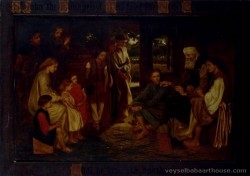
Valentine Cameron Prinsep
Valentine Cameron "Val" Prinsep RA (Calcutta 14 February 1838 – 11 November 1904 London) was a British painter of the Pre-Raphaelite school. He is often known as Val Prinsep.
Early life
Born in Calcutta, India, his parents were Henry Thoby Prinsep, for sixteen years a member of the Council of India, and Sarah Monckton Pattle, sister of pioneering photographer Julia Margaret Cameron (née Pattle) and Maria Jackson (née Pattle), grandmother of Virginia Woolf and Vanessa Bell. Henry and Sarah had settled at Little Holland House and made it a centre of artistic society.
Career


Prinsep was an intimate friend of G. F. Watts, under whom his son first studied. He went out with Watts in 1856–57 to watch Sir Charles Newton's excavation of Halicarnassus. After studying under Watts he proceeded to Marc-Charles-Gabriel Gleyre's atelier in Paris. There Whistler, Poynter, and Du Maurier were among his fellow students, and he sat unconsciously as a model for Taffy in Du Maurier's novel Trilby. From Paris, Prinsep passed to Italy. With Burne-Jones he visited Siena and there he made the acquaintance of Robert Browning, of whom he saw much in Rome during the winter of 1859–60.[1]
He was an intimate friend of John Everett Millais and of Edward Burne-Jones, with whom he travelled in Italy. He had a share with Rossetti and others in the decoration of the hall of the Oxford Union. With other members of the Pre-Raphaelite Brotherhood, he taught at the Working Men's College during the mid-19th century.[2]
Prinsep first exhibited at the Royal Academy of Arts in 1862 with his Bianca Capella, his first picture, which attracted marked notice, being a portrait (1866) of General Gordon in Chinese costume. Prinsep lent the costume to Millais who used it in his own painting Esther. From that time to his death Prinsep was an annual exhibitor. Prinsep's chief paintings were Miriam watching the infant Moses (exhibited at the Royal Academy in 1867), A Venetian lover (1868), Bacchus and Ariadne (1869), News from abroad (1871), The linen gatherers (1876), The gleaners, and A minuet.[1]
In 1877, he went to India and painted a huge picture of the Delhi Durbar, exhibited in 1880 at the Royal Academy, presented to Queen Victoria and afterwards hung at Buckingham Palace. This "colossal work" attracted much favourable press criticism.[3]
The best of his later exhibits were À Versailles, The Emperor Theophilus chooses his Wife, The Broken Idol and The Goose Girl. He was elected A.R.A. in 1879 and R.A. in 1894.[1]
Later life

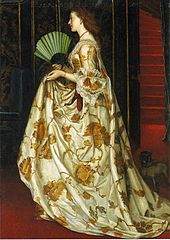
Prinsep died at Holland Park, west London in 1904, and is buried in Brompton Cemetery, London.[4]
He is buried with his wife Florence.
The highly distinctive Roman style monument lies on the western path between the north entrance and the central buildings.
Family
He married in 1884 Florence, daughter of Frederick Richards Leyland of Wootten Hall, Liverpool. She survived him with three sons
